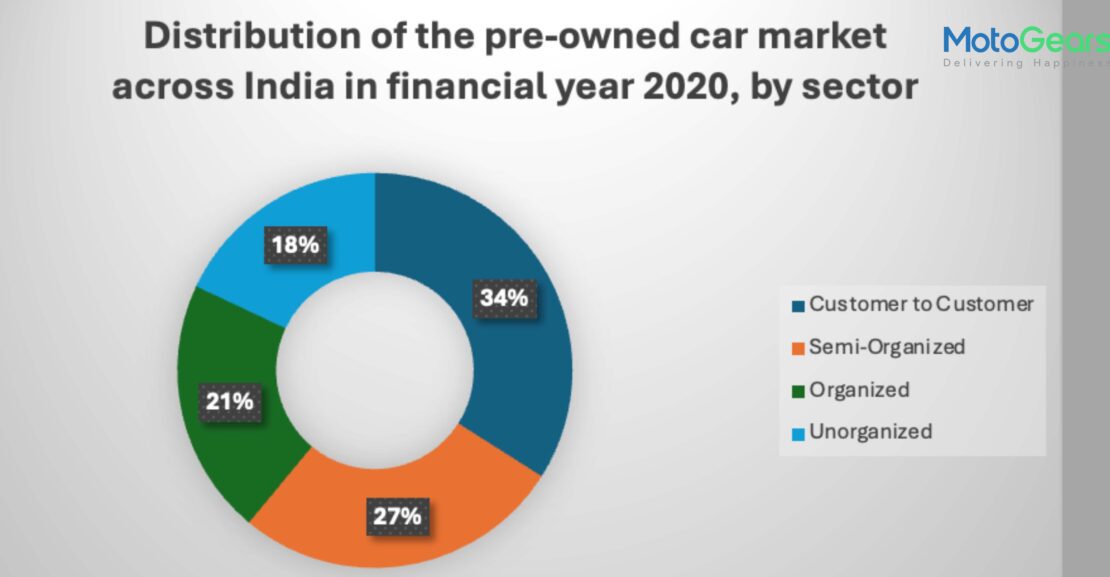Embark on a journey into the heart of India’s bustling used car market, where opportunities abound and growth knows no bounds. In this comprehensive analysis, we’ll delve into the intricacies of the market, explore emerging trends, and uncover the underlying factors propelling its expansion.
Understanding the Market Landscape
The India Used Car Market is a dynamic ecosystem, estimated at USD 31.62 billion in 2024, with a projected value of USD 63.87 billion by 2029, showcasing a remarkable CAGR of 15.10% during the forecast period. Despite the disruptions caused by the COVID-19 pandemic, the market has demonstrated resilience, buoyed by shifting consumer preferences and a burgeoning demand for individual mobility solutions.
Factors Driving Market Growth
- Preference for Individual Mobility: The pandemic-induced aversion to public transportation and shared mobility options has fueled a surge in demand for individual mobility solutions, driving consumers towards the used car market.
- Increasing Finance Options: The availability of a diverse range of financing options has made purchasing a used car more accessible to a wider demographic, further stimulating market growth.
- Impact of BS-VI Emission Standards: The implementation of stringent emission standards by the Government of India has led to an increased emphasis on the adoption of eco-friendly vehicles, thereby influencing consumer purchasing decisions in the used car market.
- Reduced Cash Inflow During the Pandemic: The economic uncertainties resulting from the pandemic have constrained cash inflows for consumers, prompting them to explore cost-effective alternatives such as used cars.
Challenges and Opportunities
While the market presents immense growth opportunities, it is not without its challenges. Factors such as the lack of standardized dealership experiences, high pricing, and financing costs for used cars pose potential obstacles to market expansion. However, these challenges also represent areas ripe for innovation and improvement, presenting opportunities for industry players to differentiate themselves and carve out a niche in the market.
Consumer Behavior and Market Trends
- Shift in New-to-Used Car Ratio: The new-to-used car ratio has shifted from 1:1.2 to 1:2.2, indicating a growing preference for used cars among consumers. This trend is further corroborated by the declining average holding time of new cars, which has decreased from 5-6 years to 3 years.
- Preference for Maruti Suzuki: Maruti Suzuki continues to dominate the used car market, enjoying a majority market share owing to its reputation for reliability and affordability.
- Organized Sector vs. Informal Transactions: Despite the dominance of Maruti Suzuki, the organized sector accounts for only 17% of the market, with the majority of transactions still occurring informally.
Emerging Trends and Market Developments
- Entry of Luxury Brands: The entry of luxury brands such as Porsche into the used car market signals a shifting landscape, with premium offerings gaining traction among discerning consumers.
- Expansion of Luxury Car Certified Programs: Volvo’s plans to expand its certified used-car business across India underscore the growing demand for luxury vehicles in the used car segment.
Market Trends and Growth Drivers
- Rising Middle Class and Young Population: India’s burgeoning middle class and youthful demographic are driving demand for used cars, fueled by increasing disposable incomes and technological advancements.
- Growing Demand for Luxury Used Cars: The demand for luxury vehicles is on the rise, with consumers attracted to the accessibility of financing options and lower entry prices offered by the used car market.
Conclusion: Navigating the Road Ahead
In conclusion, India’s used car market presents a mosaic of opportunities and challenges, shaped by shifting consumer preferences, technological advancements, and evolving market dynamics. By embracing innovation, fostering transparency, and capitalizing on emerging trends, industry players can navigate the road ahead with confidence, unlocking new avenues for growth and success in one of the country’s most vibrant sectors. As the market continues to evolve and expand, the future is ripe with promise, waiting to be explored by those bold enough to seize the opportunity.

